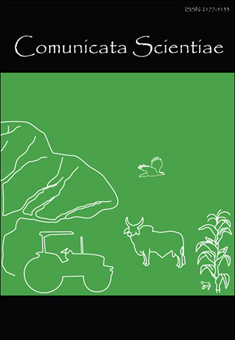Exploitation of egg parasitoids for control of potential pests in vegetable ecosystems in India
DOI:
https://doi.org/10.14295/cs.v3i1.172Keywords:
vegetable ecosystem, trichogramatids, sceliouids, strains, kairomones, integrationAbstract
In vegetable ecosystem the egg parasitoids are mainly Trichogrammatids (Trichchogramma, Trichogrammatoidea) on Lepidoptera, Secelionids (Telenomus, Trissolcus) on Lepidoptera and Hetroptera, and Mymarids on leafhopper and thrips. Trichogramma chilonis is found promising as a natural and augmentation control agent for several lepidopteran pests. Considerable progress has been made on utilizing kairomones for improving the performance of T. chilonis. Release systems should be refined to match with host abundance pattern, while a novel method of spraying parasitized eggs has been found promising. Inundative releases of T. chilonis , T. brasiliensis and T. pretosium for Helicoverpa control in tomato, Okra and chilli, besides T. chilonis for Leucinodes orbonailis on brinjal have been demonstrated to be effective. Similar promising results have been obtained from Trichogrammatoidea bactrae and T. brassicae release in controlling Plutella xylostella on cabbage. Integration of egg parasitoid release with NVP, neem and pheromone trap has been shown possible in IPM modules. The scope of mass rearing of Telenomus remus on Corcyra cephalonica has been demonstrated, while further improvements in their efficiency are required. The present constraint in mass production and storage of T. achaea may merit attention. Further research may focus also on strains collection for stress adaptation, host searching and also on field dispersal and utilization of semiochemicals for improving the field performance of mass- released parasitoids.
Downloads
Downloads
Published
How to Cite
Issue
Section
License
All articles published may be reproduced or utilized in any form or by any means whether specified Comunicata Scientiae, author(s), volume, pages and year. The authors are responsible for all the statements and concepts contained in the article.




